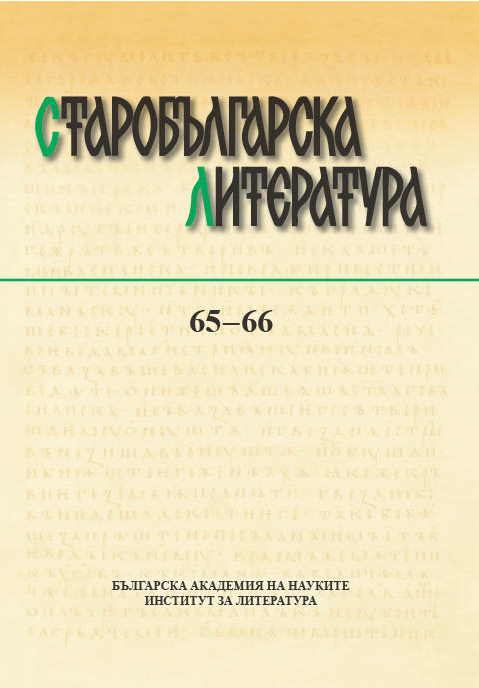Места на паметта за св. Горазд и св. Ангеларий в гр. Берат (Албания)
Lieux de mémoire of St Gorazd and St Angelarius in the City of Berat (Albania)
Author(s): Evgeni ZashevSubject(s): Christian Theology and Religion, History, Language and Literature Studies, Cultural history, Local History / Microhistory, Middle Ages, Theology and Religion, Philology
Published by: Институт за литература - БАН
Keywords: the Seven Slavic Saints; St Gorazd; St Angelarius; Berat; lieux de mémoire
Summary/Abstract: This article examines various lieux de mémoire associated with St Gorazd and St Angelarius in the city of Berat (Belograd, Velagrad, Velegrad or Albanian Belgrade), in order to highlight the place and role of the memory of these two disciples of Cyril and Methodius in the process of the emergence and institutionalization of the cult of the Holy Heptarithmoi (the Seven Slavic Saints). Its objects of study are oral lore about the relics of St Gorazd and St Angelarius, and the artefacts and written monuments attesting to the veneration of these saints. The various sources presented here categorically attest that in the eighteenth–nineteenth centuries, and perhaps quite earlier, the memory of St Gorazd and St Angelarius was venerated in Berat. This memory was most probably entirely post-biographical and had mixed (folk and literary) origins, based on their supposed relics. It is the connection with these relics that unites a series of lieux de mémoire which, arranged in chronological order, look like this: Berat (Venetian) office for the Seven Slavic Saints with a canon dedicated to St Gorazd and St Angelarius (1720); an icon of the Seven Slavic Saints representing the assumption of St Gorazd and St Angelarius (1812–1814); two reliquaries in the shape of shoes, one of them dedicated to St Angelarius (1823); A Brief Historical Overview of the Holy Metropolitanate of Velehrad by Anthimos Alexoudis, indicating the church of the Dormition of the Theotokos in Berat as the place where the relics of St Gorazd and St Angelarius were preserved (1868); a second icon of the Seven Slavic Saints representing the assumption of St Gorazd and St Angelarius (1873); a silver-plated reliquary from the church of the Dormition of the Theotokos in Berat. The hypothesis is presented that the meaningful framework uniting those lieux de mémoire is a local oral narrative that is partially reconstructed. The interpretation of the sources listed and of the links between them points to the conclusion that the “relics” of St Gorazd and St Angelarius were the material basis for the construction of a local tradition of veneration which, in turn, formed the core of the cult of the Seven Slavic Saints that was institutionalized in the early eighteenth century. These relics are the sacred centre around which the memory of the seven Slavic enlighteners was organized in Berat and its surroundings – a cult that was to be gradually freed from this dependence, as the chronologically second Moscopole office for the Seven Saints shows, and to become part of Bulgarian Revival culture.
Journal: Старобългарска литература
- Issue Year: 2022
- Issue No: 65-66
- Page Range: 282-316
- Page Count: 35
- Language: Bulgarian
- Content File-PDF

